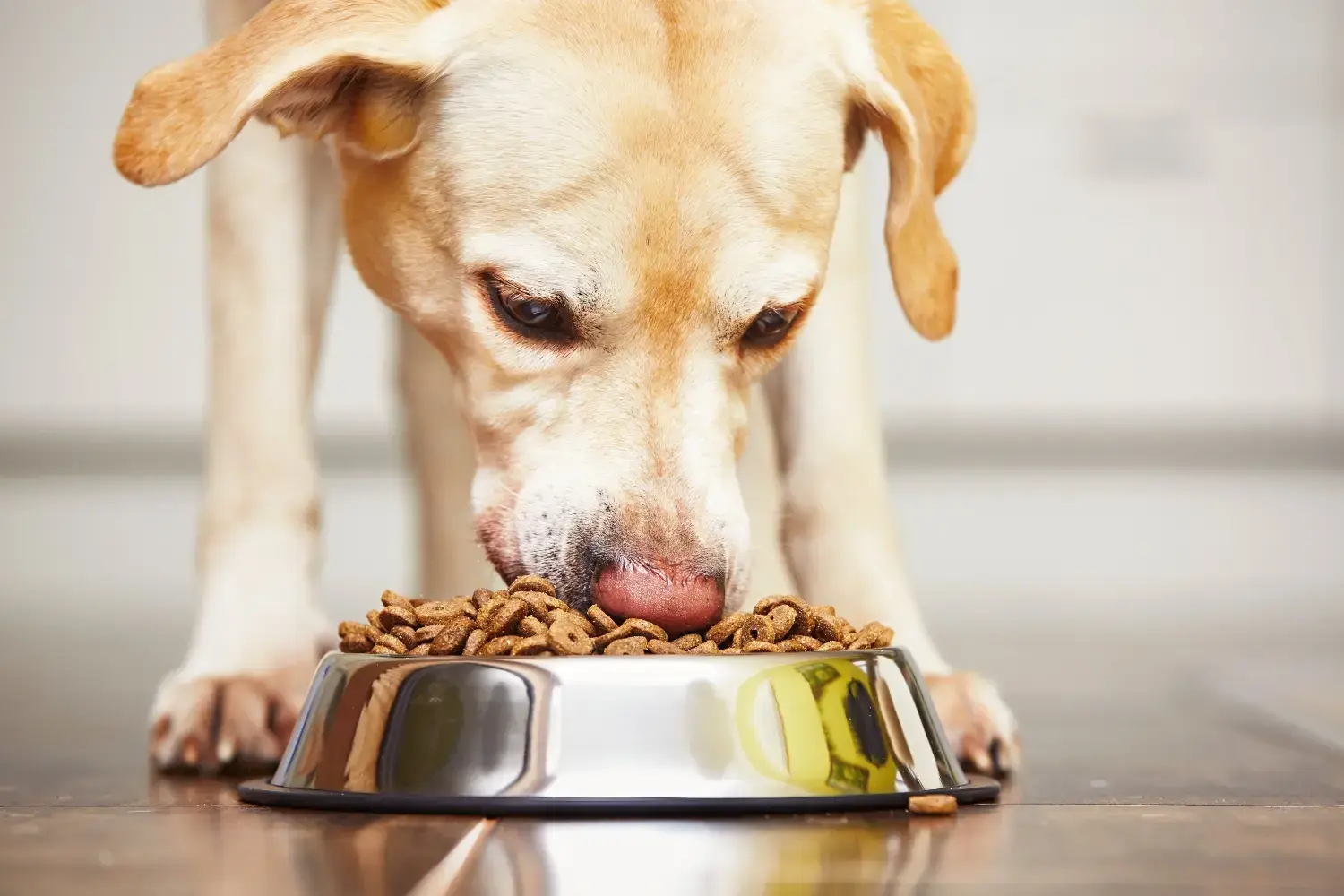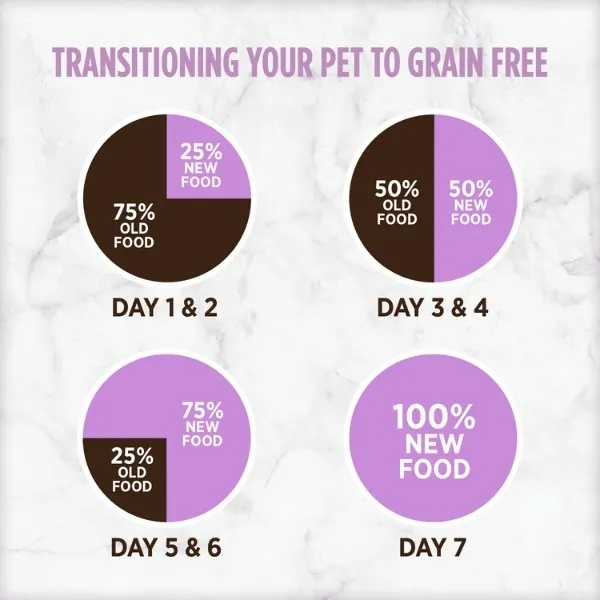Choosing the appropriate canine food is important for your pet’s health and quality of life. Grain-free dog food has become popular for dogs with sensitivities or owners looking for a more traditional diet. This article explores the key benefits, nutritional content, product kinds, and important factors associated with grain-free canine food.

What Is Grain-Free Dog Food?
Grain-free dog food excludes grains such as wheat, corn, rice, soy, and barley and wheat. Rather, it uses other carbohydrate sources such as peas, lentils, or potatoes. Foods of this kind are constantly designed to imitate the typical diet of wild dogs.
Considering a raw diet? Read our full raw cat food guide
Learn more about the cats can eat cheese
What are the Benefits of Grain-Free Dog Food?
1. For Dogs with Grain Allergies or Sensitivities
Some dogs develop inflammation, itchy skin, or digestive problems when they eat grain-based diets. Grain-free options may help alleviate these symptoms.
2. Better Digestion
Carbohydrates: Easily digestible carbohydrates like sweet potatoes may be less harsh on your canine’s stomach.
3. Rich in Protein
Since grain-free canine food requires the attention of animal protein, it is ideal for active or working dogs.
The Science Behind Grain Sensitivities in Dogs
Grain sensitivities in dogs mean that some dogs have trouble eating foods that contain grains like wheat, corn, rice, or barley. Their bodies do not handle these grains well, which can make them feel sick.
Dogs with grain sensitivity might get itchy skin, stomach problems like gas or diarrhea, or ear infections after eating food with grains. It does not mean all grains are bad, but some dogs just can not digest them properly.
If you think your dog has this problem, it is a good idea to talk to a vet. They can help you choose the right food that would not upset your dog’s stomach or skin.
Nutritional Profile Of Free Grain-Dog Food
- Grain-free diets maintain balanced nutrition by incorporating
- Animal proteins (such as chicken, beef, and salmon) for muscle growth
- Vegetables (peas and carrots) are high in vitamins and fiber
- Healthy Fats( fish oil, chicken fat) promote skin and coat health
- Crucial Nutrients( taurine, omega- 3s) Promote Heart and joint health
Is grain-free dog food better than regular?
Grain-free dog food is designed for dogs that may have sensitivities to common grains like wheat, corn, or soy. These formulas typically use alternatives like sweet potatoes, peas, or lentils as carbohydrate sources. Some dog owners report improvements in digestion, coat condition, and energy levels after switching to grain-free food. However, it is not automatically better for all dogs. Most healthy dogs can digest grains without any issue, and whole grains can actually offer important nutrients like fiber, vitamins, and antioxidants.
Grain-free may benefit dogs with confirmed grain allergies or sensitivities, but it is not necessary for every pet.
Types of Grain-Free Food
1. Dry Long-lasting Kibble
- Long shelf life and easy-to-serve
- Includes LifeSource Bits or freeze-dried raw pieces in some premium brands
2. Wet Grain-Free Dog Food
- Increased humidity content, ideal for hydration.
- Often more appealing for picky eaters
3. Raw, Freeze-dried, dried, and grain free Formulas
- Less processed and closely aligned with ancestral diets
- Usually higher in protein and nutrient density
Top Grain-Free Dog Food Brands
Some top brands that do not include grains are
- Blue Buffalo Nature
- Taste of the Wild
- Wellness CORE
- Merrick Grain- Free
- Instinct Raw Increase
These brands give different formulas depending on particular health conditions, breed size, and life stage.
How to Read the Label of Grain-Free Dog Food
Knowing for label guarantees that you are choosing a formula that offers full and balanced nutrition.
Then is what you should be invoking for:
- The first component is a beef protein( e.g., Deboned chicken).
- AAFCO Certification, which guarantees compliance with standard salutary guidelines
- Look for natural preservatives such as mixed tocopherols instead of artificial chemicals
- Avoid vague terms like meat meal or animal by-product.
Comparison: Grain-Free vs Grain-Inclusive Dog Food
| Feature | Grain-Free Food | Grain-Inclusive Food |
|---|---|---|
| Carbohydrate Source | Sweet potatoes, peas | Wheat, rice, corn |
| Protein Content | Typically higher | Moderate |
| Best for | Dogs with sensitivities | Healthy dogs without allergies |
| Cost | Often more expensive | Usually more affordable |
Factors to Weigh Before Changing
1. A Grain-Free diet is not necessary for Every Dog
While sometimes profit from grain-free diets, not all do. Dogs that do not have a sensitivity to grains may thrive on high-quality grain-free diets.
2. Who should avoid grain-free dog food?
Not all dogs thrive on a grain-free diet. Some dogs, especially large breeds, may benefit from the complex carbs in grain-inclusive formulas. Grain-free foods are sometimes too high in legumes or starches, which can affect digestion or energy levels in certain dogs.
Examples of dogs who might not need grain-free food:
- Puppies in rapid growth stages
- Dogs with low activity levels
- Dogs already on a vet-recommended special diet
Consulting with your vet helps you make the safest choice based on your dog’s breed, age, and health profile.
3. FDA Inquiry into Cardiovascular Health
The FDA has looked into a dilated connection between grain-free diets and canine dilated cardiomyopathy (DCM). Although no conclusive findings have been reached, it’s recommended to speak with your veterinarian before making any changes.
4. Nutrition Balance is Important
Corridor Grain-Free follows AAFCO standards to provide complete and balanced grain-free nutrition.
Tips for Transitioning to Grain-Free Dog Food
- Introduce Slowly: Mix the new food with the old over 7–10 days.
- Observe Changes: Monitor your dog’s stool, coat condition, and energy levels.
- Stay Consistent: Avoid frequent diet changes unless recommended by a veterinarian.

Frequently Asked Questions (FAQs)
Is grain-free canine food suitable for every canine?
Can puppies eat grain-free dog food?
Is grain-free food low in carbohydrates?
Can I mix grain-free and grain-inclusive food?
How do I know if my dog needs a grain-free diet?
CONCLUSION
Grain-Free Dog Food offers several benefits for dogs with sensitivities or owners seeking cleaner, protein-rich diets. However, it’s not a one-size-fits-all solution. Always consult your veterinarian to determine if it suits your dog’s unique health needs. With the right product, your dog can thrive on a nutritious and balanced grain-free diet.


Pingback: Can Dogs Eat Rice? A Complete Companion for Pet Owners -